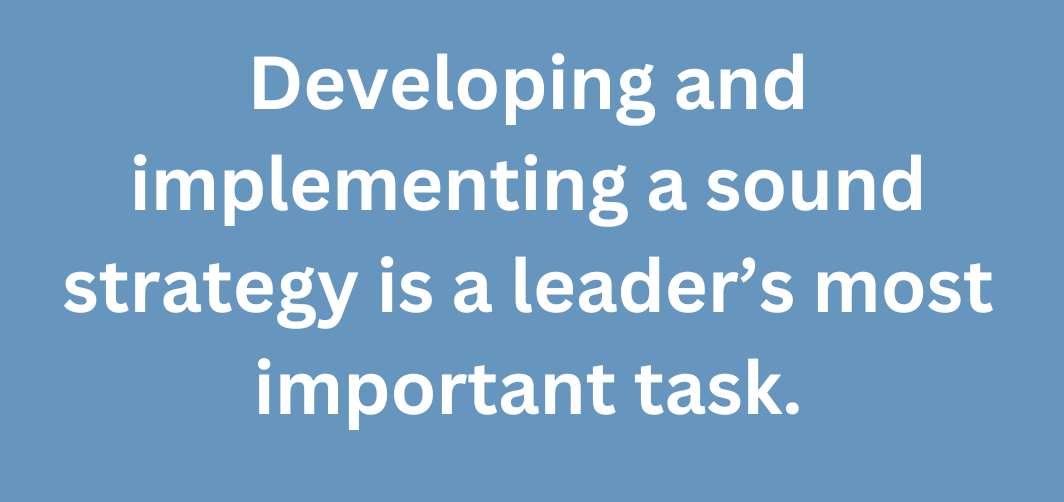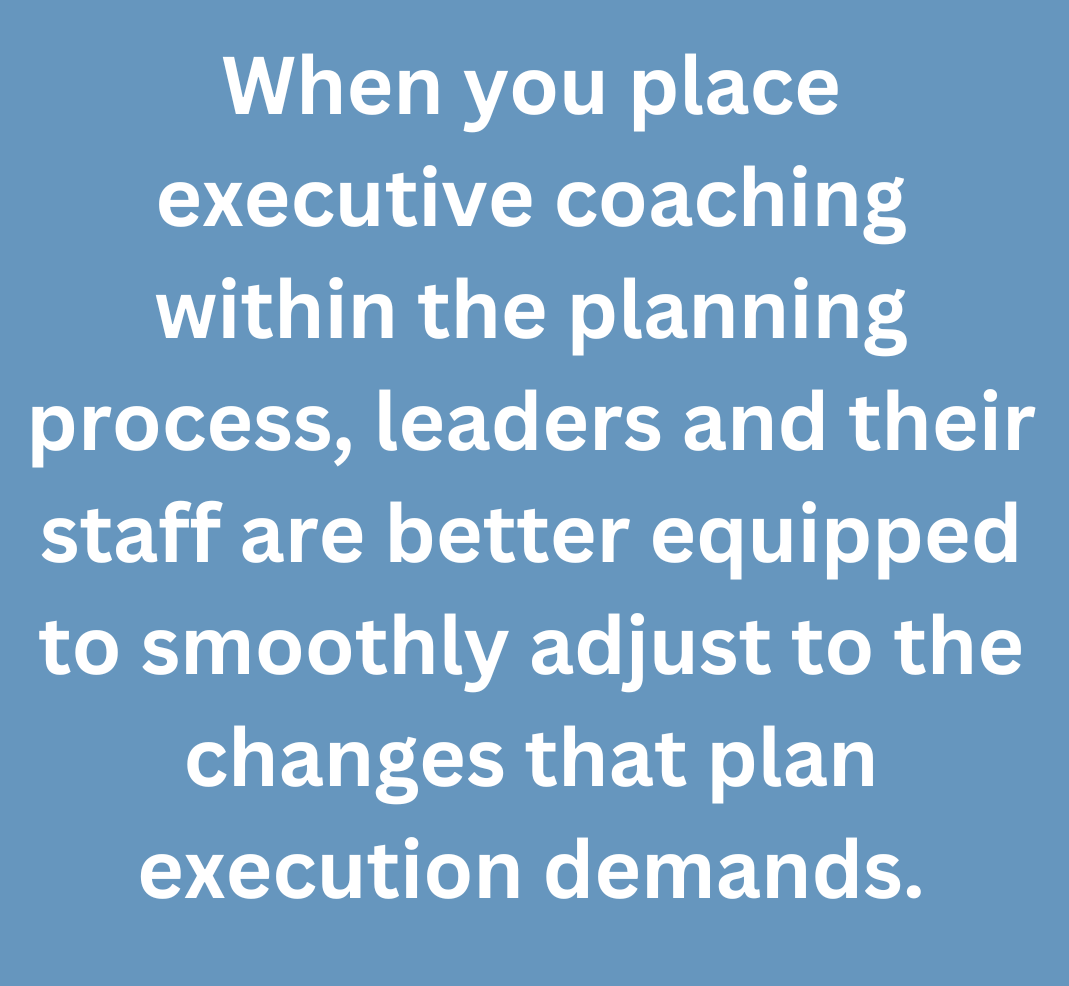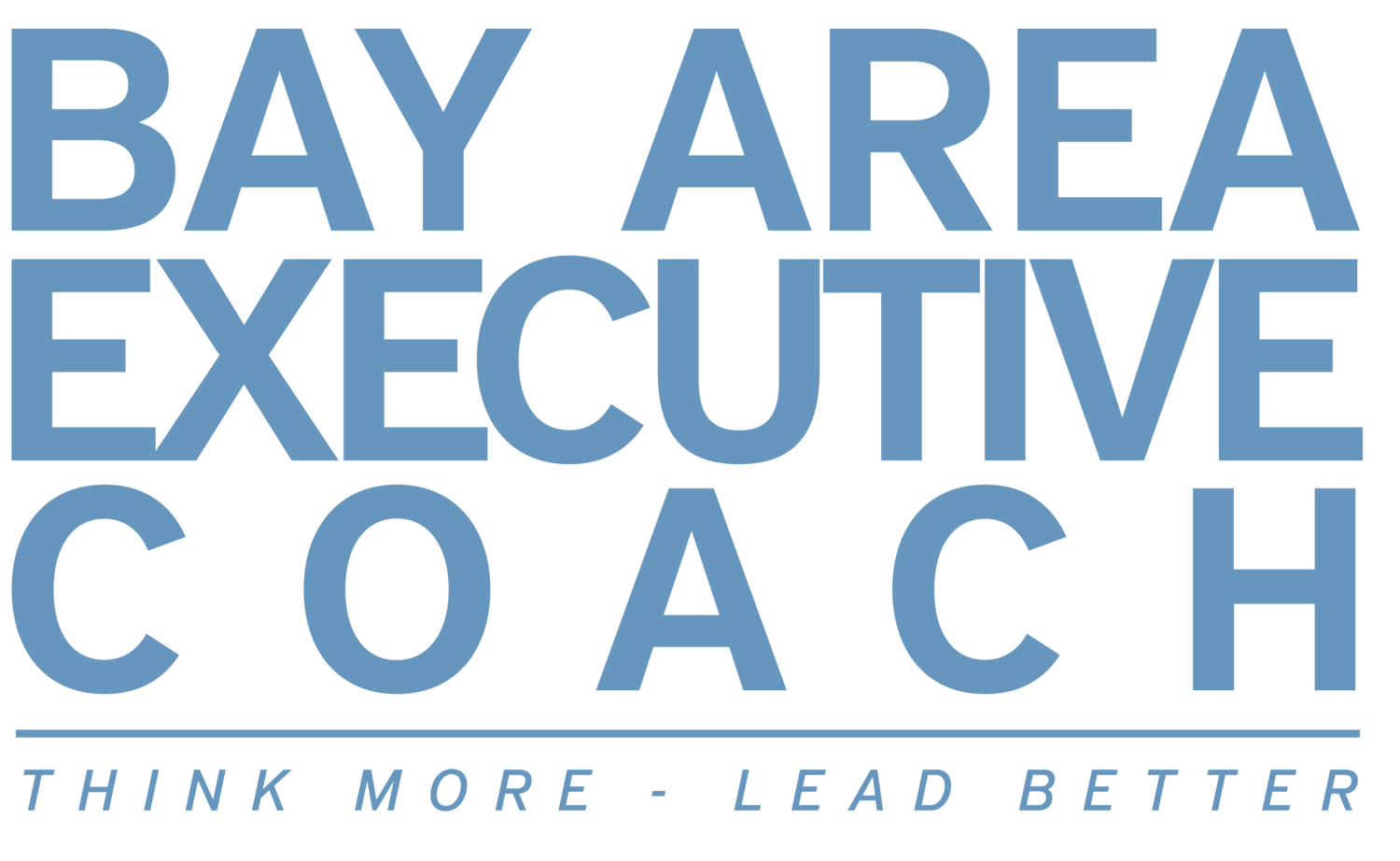Strategic planning is a must for organizations of all sizes. Moreover, strategic thinking isn’t something you do once a year, but make a habit of doing all the time. You’re always thinking strategically and planning when it makes sense and not necessarily in accordance with what the calendar says.
Simple concepts to be sure, but many organizations still get strategic planning wrong. This post is designed to guide you to doing it right by leaning on the work of a big thinker in the strategic planning world. There are a few other principles as well that we’ve learned make sense.
Tapping into the smart strategic planning work of Richard Rumelt
Richard Rumelt, Professor Emeritus at the UCLA Anderson School of Management, is a distinguished college professor and author and one of the world’s most influential thinkers on corporate strategy and management. Dr. Rumelt was a founding member of the Strategic Management Society and served as its president for 3 years in the 1990s. He’s the author of many books, two of which, Good Strategy/Bad Strategy, and The Crux are clearly for anyone who wants to get better, much better, at strategic planning. 
If you’re sincerely interested in building your strategic thinking and planning skills, then these books are must-reads for you. Here are some key takeaways from each book:
Good Strategy/Bad Strategy: The Difference and Why It Matters
Developing and implementing a sound strategy is a leader’s most important task. A good strategy is a specific and coherent response to overcoming the obstacles to progress. A good strategy works by harnessing and applying power where it will have the greatest effect.
Rumelt debunks the elements of a “bad strategy” while expounding on the elements of a “good strategy.”
He considers the hallmarks of Bad Strategy as:
- A Reliance on “Fluff”: obfuscation, jargon, and “Double Dutch” masquerading as strategic concepts or arguments. Rumelt strongly dislikes the use of worn out cliches or obscure language that creates the illusion of high-level thinking. He views terms such as “seamless” or “multi-channel” as so overused that they’ve lost most of their meaning.
- Failure to Face the Challenge: Bad strategies fail to recognize or define the important challenges facing a company. They’re generic and unfocused and don’t address the most important issues in direct or concrete terms.
- Mistaking Goals for Strategies: Many bad strategies are just statements of desires rather than plans for overcoming obstacles. For example, phrases such as “entering new markets” or “becoming the industry leader” fail to highlight specific strategic obstacles or opportunities a business faces.
- Adopting Bad Strategic Objectives: Strategic objectives are ‘bad’ when they fail to address critical issues or when they’re impracticable. Statements like “our goal is to become the world’s leading manufacturer of widgets” is not a strategy but more akin to a vision statement. A purported strategy can’t be considered effective unless it contains true analysis of the challenges and opportunities a business faces ahead.
The Hallmarks of Good Strategy:
Rumelt describes the structure that underlies the good strategy paradigm as a “kernel.” This kernel contains three elements:
- A “diagnosis” that defines or explains the nature of the challenge. Essentially this is about understanding what’s going on without illusions or preconceived notions. As Rumelt points out: “an explicit diagnosis permits one to evaluate the rest of the strategy.”
- A guiding policy for dealing with the challenge. This is an overall approach chosen to cope with or overcome the obstacles identified in the diagnosis. The guiding policy doesn’t commit to a specific set of actions. Instead, it rules out some actions and suggests a comprehensive method for dealing with the situation described in the diagnosis.
- A set of coherent actions designed to carry out the guiding policy. These are steps that are coordinated among team members to accomplish the guiding policy. Rumelt stresses that strategy is all about taking action to overcome obstacles or seize opportunities.
 By implementing Rumelt’s kernel of good strategy, described in detail in this book, the business leader can devise and implement realistic and effective strategies that pay off in long-term benefits to their company.
By implementing Rumelt’s kernel of good strategy, described in detail in this book, the business leader can devise and implement realistic and effective strategies that pay off in long-term benefits to their company.
In a nutshell: to create an effective strategy, start with identifying the critical challenges that the strategy needs to address.
The Crux: How Leaders Become Strategists
Rumelt’s breakthrough concept in this book is that leaders become effective strategists when they focus on challenges rather than goals. The key is to identify “the crux:” the key issue where action will best pay off. A good strategy is not about setting financial targets, statements of desired outcomes, or performance goals, but about finding the crux of a challenge and taking decisive, coherent action aimed at that challenge.
Rumelt talks about strategy as a sort of design, and of design as an act of creation. Quoting from the book: “The result is a design rather than a choice. It is a creation embodying purpose. I call it a ‘creation’ because it is not obvious to most others, the product of insight and judgment rather than an algorithm.”
Rumelt explores four themes in the book:
- The best way to deal with strategic issues is by squarely facing the challenge.
- Understand the sources of power and leverage what’s relevant to your situation.
- Avoid the distractions that abound and maintain focus on what’s truly important.
- Recognize there are multiple pitfalls when executives work in a group, or a workshop, to formulate strategy.
These themes point to three important strategy-forming processes at the core of The Crux:
- Defining a strategy and how to properly think about creating a strategy.
- How to deal with strategic issues and how to meet a challenge.
- How to diagnose a problem when creating strategic plans.
Rumelt emphasizes that the strategic plan must be agile and adaptable because the crux fluctuates over time. Rumelt reaffirms his belief that strategic planning isn’t something accomplished at an offsite meeting once every few years and then pinned to the office wall. He views the term “long-term plan” as a contradiction in terms. A strategic plan shouldn’t be for the “long term.” Rather, it should be as dynamic and flexible as the company it serves.
Some Strategic Planning Best Practices.
Here are Rumelt’s most important strategizing best practices, augmented with a nod to the role executive coaching might play in strategic planning.
- Don’t confuse goal setting with strategic planning. Goal setting is picking a target that sounds good even when you’re unsure of how you’ll achieve it. True strategic planning sees a clear challenge and seeks to address it with a guiding policy and coherent actions.
- Plan to take advantage of market opportunities. Look for market opportunities that align with one or more of your company’s strengths, and leverage your strengths to take advantage of those opportunities. Maintain agility to readily adapt to changing market conditions.
- Consider planning using the “Three Horizons” framework. In his book “Three Horizons: The Patterning of Hope,” author Bill Sharpe describes a strategic planning framework incorporating 3 timeline horizons: the present, the short-term (in the coming 1-3 years) and the long-term (5 years and beyond.) Horizon one is focused on business as usual, managing today, incremental improvements, and efficiency and effectiveness. Horizon two is innovating for tomorrow: looking at the short to medium-term future and encompassing the sphere of new opportunities and innovation. Horizon three is future foresight, considering what is emerging over the future horizon and what might become commonplace in the near to medium-term future. Sharpe recommends that strategic planning be done in a counterintuitive way by starting with one followed by a jump to three, then returning to two. By planning “1-5-3” instead of “1-3-5,” companies start their strategic planning by reviewing the present – what’s working well or not working well, then extrapolating that into their long term planning before planning for their near-term. To do”1-3-5” would risk innovating the near-term tomorrow based on the framework of yesterday’s mindset and assumptions instead of what lies further down the road. This approach enables more breakthrough thinking.
- Adopt a learning and adaptive mindset to your strategic planning. A “learning organization” is a company that’s constantly surveying the market, the environment, and trends, all the while learning and adapting to changing realities. Technological know-how has now become less valuable than learning know-how. Learning organizations make concerted efforts to learn and grow, change and adapt, and predict and base their strategic planning on those experiences. They are the organizations better equipped to win today than those that rely primarily on technical know-how.
- Integrate executive coaching into your strategic planning process. According to Harvard Business School Professors Robert Kaplan’s and David P Norton’s book, The Balanced Scorecard: Translating Strategy into Action, 90 percent of organizations fail to execute their strategies successfully. This staggering statistic begs the question: “why is this so?” Leadership must be held accountable to follow through on the plans that are created.
Executive coaching can play a pivotal role in helping companies both develop and achieve their strategic plans and objectives. Planning entails the anticipation of change, and executing on the plan requires it. And change is difficult. 
However, when you place executive coaching within the planning process, leaders and their staff are better equipped to smoothly adjust to the changes that plan execution demands. Coaching also holds leaders accountable to fully engage in the process and spurs them to bring forth their best ideas. Furthermore, coaching encourages people to speak their minds and formulate their opinions.
Coaching can therefore be very helpful when an organization is undergoing change. Many times companies don’t execute their plans to the degree they’ve forecasted or as successful as they were hoping. That’s often because they don’t incorporate the idea of the change mindset. Coaching helps people adopt the change mindset that should resonate throughout the strategic planning process.
Here to help you plan the right way
As we’ve noted, executive coaching can be the “secret sauce” to help you conceive effective strategic planning. Schedule a meeting with us to talk about how we can help you make strategic planning more effective.
Here are more resources related to this topic
Articles:
Case Study:
Photo copyright: Featured photo is from ©Kampus Production via Pexels. Secondary photo is from ©Pavel Danilyuk via Pexels.









